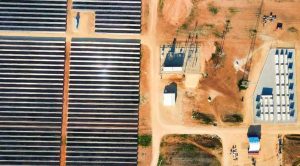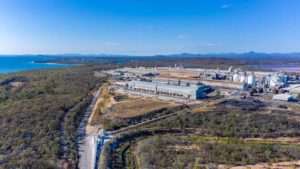The head of one of biggest energy utilities in the US, David Crane of NRG, predicts that solar PV will have as much of an impact on the energy industry as mobile phones did on the telecommunications industry.
Crane told a Deutsche Bank conference in New York this week that technologies are rapidly breaking down barriers in the energy industry, particularly in the retail market. “Over the next 20 years, distributed solar will do to grid power what cell phones have done to fixed line telephony over the past 20 years,” he told the conference.
Crane has become one of the most influential thinkers on the clean energy revolution, in the US and globally, and as we reported in this story, Shock of the new energy business models, he has said that solar PV is the biggest game changer in the energy industry in the past 25 years, and he has also predicted an end to the “hub and spoke” model of centralised generation.
Crane appears to have softened is views about the hub and spoke, notably because of the plunging gas price in the US, thanks to bountiful shale gas reserves. But he is insistent that will have no impact on the retail market, where he says the issue of retail grid parity, and the ability of solar PV to beat grid-based retail electricity prices by a comfortable margin, will change the nature of the industry – not just in the US, but in most other markets.
Crane runs a substantial company. It has a portfolio of around 25,000MW (about half the size of Australia’s grid) spread over coal, gas, nuclear, wind and solar. NRG is the largest single investor in utility-scale solar in the US, with nearly one gigawatt of facilities built or under construction, out of a total solar portfolio of 2000MW. But it is the rooftop and distributed solar market that Crane suggests will have the greatest impact.
The extent of solar PV’s ability to have the same impact on the retail energy market as mobile phones had on fixed-line telephony has been hotly debated, including in Australia, with some experts suggesting the discretionary nature of telephones made it more of a gadget than energy sources.
Crane is not so sure. He says the combination of technology savvy consumers, their ability to choose and shop around, and the potential of energy service providers to customise their offerings, including electric vehicles and smart metering, changes the nature of the game.
“The new clean energy business is not separate and distinct from conventional grid-based power system,” he told the conference, according to presentation notes provided to RenewEconomy. “The best companies will build the new and clean on the foundation of the old and reliable.”
NRG’s large-scale solar business – which accounts for more than 950MW of plants built or under construction, including Ivanpah solar tower plant, and the Blythe and Agua Caliente solar PV plants – is already paying dividends, quite literally. The company plans to make its first ever distribution to shareholders later in 2012, which CFO Kirk Andrews told the same conference was largely tied to its industry-leading solar program, as well as its wind business. The “clean energy” distribution is expected to rise four-fold in coming years.
The clean energy program delivered earnings of $US120 million in the first quarter, and is expected to rise to $US720 million by the first quarter of 2014. Interestingly, Deutsche Bank has already ascribed a high valuation – 10 times earnings – to NRG’s solar business than it has to the rest of its portfolio (8.5x).
Andrews said NRG’s clean energy strategy is to get first move advantage “across the green energy, beyond-the-meter space to leverage potential for high growth and strong returns.” He says this will encompass clean transportation (including home and network charging), home energy services such as rooftop solar, smart meters and LEEDs, this will encompass EV services, smart meters, LED lighting.
He noted that even in the US, with relatively cheap petrol prices (around $3/gallon), the low cost of gas meant that utilities could still deliver charging to electric vehicles and offer savings to consumers and make a profit. That opportunity would be significantly greater if petrol prices rose to $6/gallon.
Interestingly, the company’s EV network division eVGO, has just announced a network of charging stations in Dallas, Houston and Fort Worth – right in the heart of Big Oil territory. The network will ensure that no driver is ever more than 8km of a charging station within those cities. It has also just announced a $US100 million network of fast-charging stations in the San Francisco area. Crane himself is enamoured with EVs and owns three, including a Tesla Roadster.
#solar to join the conversation on twitter







